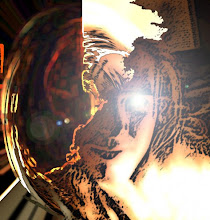In this paper, I show that the excitation energies of 29 dyes, formed by pairing different protonation states of a phenoxyl and imidazoloxyl group through a monomethine bridge, can be reproduced without loss of accuracy by a model which uses only two parameters per distinct terminal group. The set includes six distinct protonation states of the green fluorescent protein (GFP) chromophore.
The theoretical basis for the model goes back more than fifty years, and hinges on two key works by Brooker and by Platt. Both of these authors examined the color of methine cyanine dyes through a heuristic color theory based on the resonance of Lewis structures.
In the article, I make the case that the state space implicitly invoked in the resonance theory (specifically, a resonating pair of canonical Lewis structures) is actually not appropriate to describe the information content of the Brooker-Platt model. A straightforward interpretation of the Lewis structures as products of perfect bond-pairs over atomic orbitals contains too much information (relative to the information content implied by the Brooker Deviation Rule). Instead, I advocate a 3-orbital "fragment frontier orbital valence-bond" approach. The Lewis structure way of writing the resonance for the GFP chromophore motif would normally be:

Whereas I suggest a related but slightly different, less detailed ansatz, which averages over some of the structure on the rings themselves. The new ansatz uses three ring-localized orbitals:

When four electrons are distributed in these orbitals, six configurations arise:

There are a few arguments that lead to the 3-orbital model. Some of these are discussed in an upcoming Chem. Phys. Lett paper, which will shortly go to press. Another argument, that hasn't been published yet, is based purely on an information-theoretic "dimensional analysis" argument.
The argument goes as follows:
The classical resonance theory invokes two-dimensional state space, in the form of a resonating pair of canonical Lewis structures. In classical theories, Lewis structures are usually non-orthogonal (since the atomic orbitals in classical valence-bond theories are non-orthogonal).
There are multiple ways to orthogonalize two vectors. Many of these (e.g. Gram-Schmidt or Löwdin orthogonalization) map two non-orthogonal vectors onto two orthogonal vectors that span the same plane. However, there is another way to orthogonalize vectors, which maps the two non-orthogonal vectors into two orthogonal vectors in a THREE-dimensional space. This is analogous to Naimark's theorem in quantum information, which says you can always purify a mixed state by extending the Hilbert space with an appropriate "ancilla".
Applying the latter orthogonalization procedure to the canonical resonance theory suggests that the state space should be extended to a space spanned by three Lewis structures.
Now, note that there is much more information in a Lewis structure than is needed, because all of the bonds in the resonating pair change AT ONCE. This implies that each structure could be described by a contracted state with exactly ONE "perfect pair" worth of information (a perfect pair is a two-electron function, which is a superposition of a "covalent" and an "ionic" determinant).
This suggests that a more appropriate model space for the resonance theory would be spanned by three orthogonal pair states. This is isomorphic to a space spanned by a four-electron-in-three-orbital complete active space (CAS(4,3)).
The article I mention in the beginning shows that there is a self-consistent CAS(4,3) solution for the two lowest-lying electronic states of the green fluorescent protein chromophore, and explores the interesting consequences of this.
